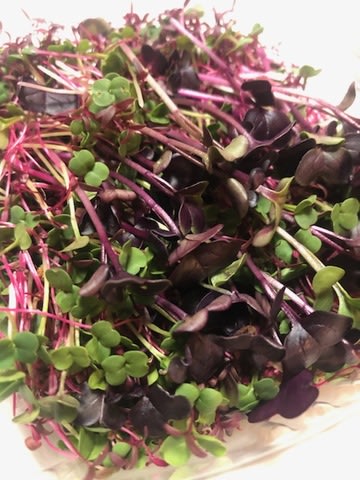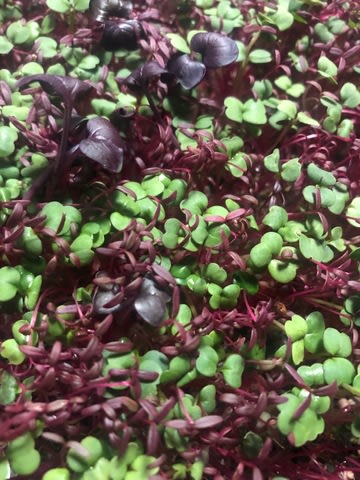
Rockford Micro-Greens
by Shannon Davis
February 22, 2023
Just like our southern neighbors and friends, we love to garden here at Pato Point Farm. With the summer and fall veggies feeding humans and critters alike!
Wanting to eat healthier diets as well as to be able to have fresh veggies year round, we found microgreens while living in Erie, PA. Snow season is long there, so microgreens really became of interest to us. During that time we were growing for personal use all year!

As a former medical college, microbiology professor and researcher, I have always loved the "microworld". Having also a passion for the culinary arts, the micro-greens grown here at Pato Point Farm are PACKED with FLAVOR! Many of the microgreens taste like their adult versions but with more flavor.
Why Microgreens?
If you are not familiar with microgreens, you might be wondering what they are and why we grow them. Let’s answer the questions, “what are they?” and “how are they of health benefit?”
What is a Microgreen?
Often times the words "sprouts" and "microgreens" are interchanged. However, they are in fact two distinct terms.
• Sprouts are the physical structures that grow from a seed during the process of germination. This process includes the seed cracking open and sending out shoots that become either the roots or the main plant stalk.
The tiny leaf-like structures that first appear from the seedling are really NOT leaves. They are called cotyledon. Cotyledons function to supply the nutrition that the little seedling needs to grow its first true leaves.
• Microgreens come into the picture at the time the first TRUE LEAVES appear. In terms of seed development, the term microgreen does not apply. It is a term that growers use to describe what they are growing versus a sprout growth stage. Once the first true leaves appear the microgreen is able to produce its own energy thorough a biological process called photosynthesis.

What are Benefits of Microgreens?
When considering the nutritional value of fresh foods, the value is not always obvious. Some varieties provide more vitamins, minerals and fiber than others. As an example veggies like corn, iceberg lettuce or celery do not provide as much nutrition as carrots, spinach or broccoli.
There is also the fact that some people just do not like to eat a lot of veggies.
However, there is a way to make even a double bacon cheeseburger healthier and tastier! That’s the incorporating of microgreens into your daily diet.
While the exact nutrient contents varies across the types of microgreens, most varieties tend to be rich in vitamins and minerals such as iron, potassium, magnesium, zinc and copper. Microgreens are rich in natural antioxidants. Antioxidants, especially polyphenols and carotenoids, exhibit a wide range of health effects.
Researchers have also shown that both sprouted seeds and microgreens tend to be more nutrient-dense than the adult plant and ungerminated. With 10-45% more nutrients in the tiny microgreen!
